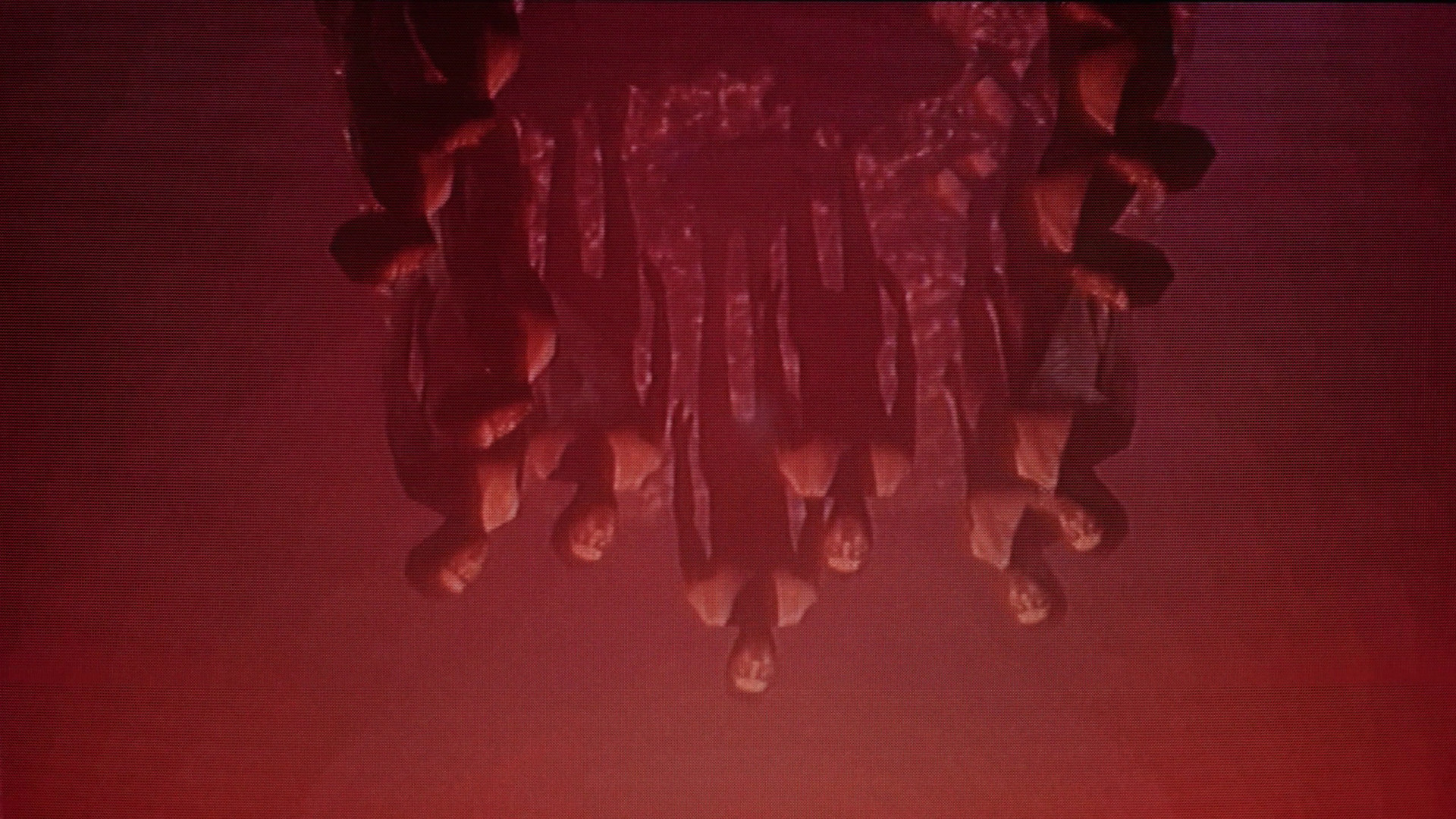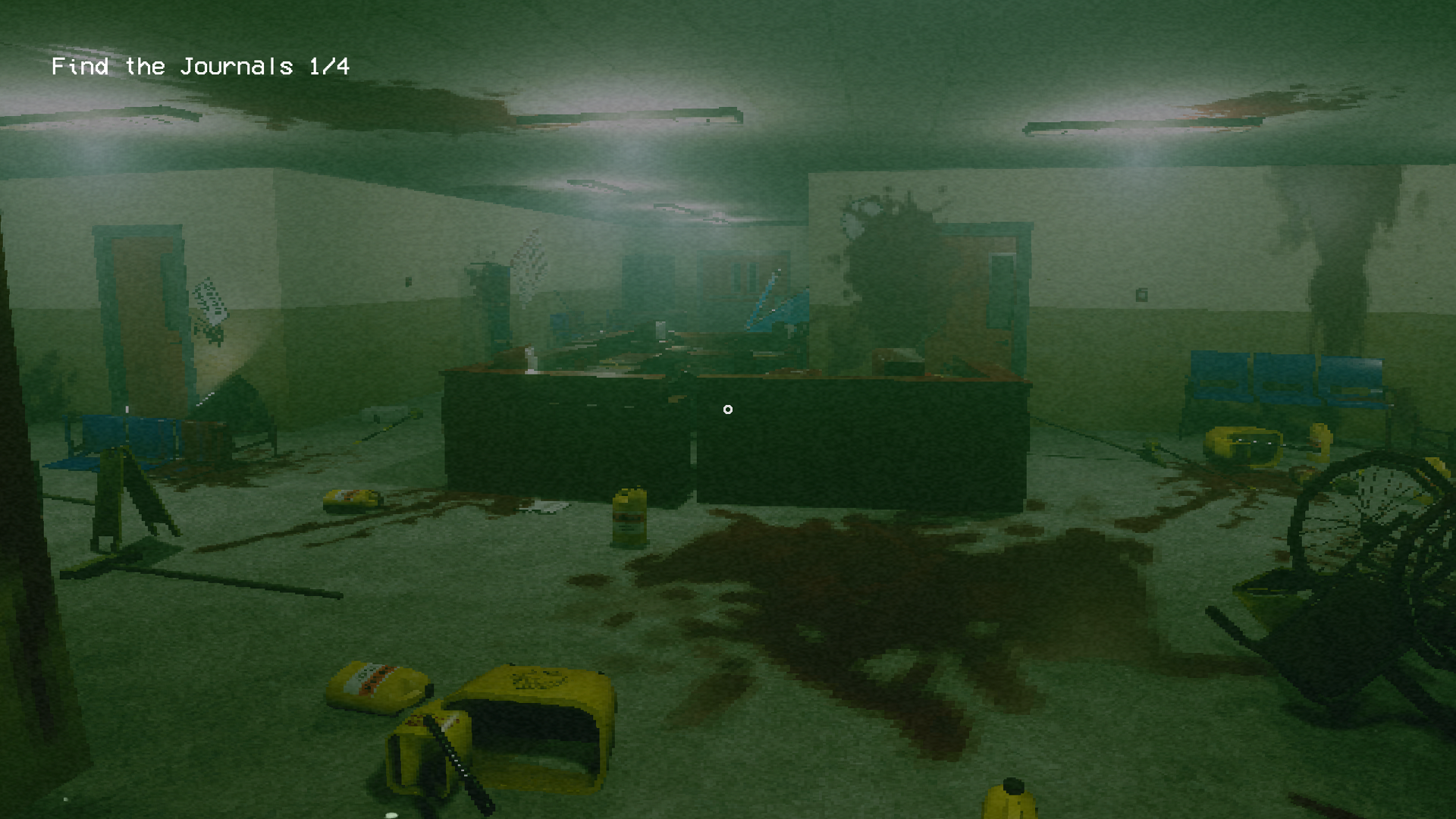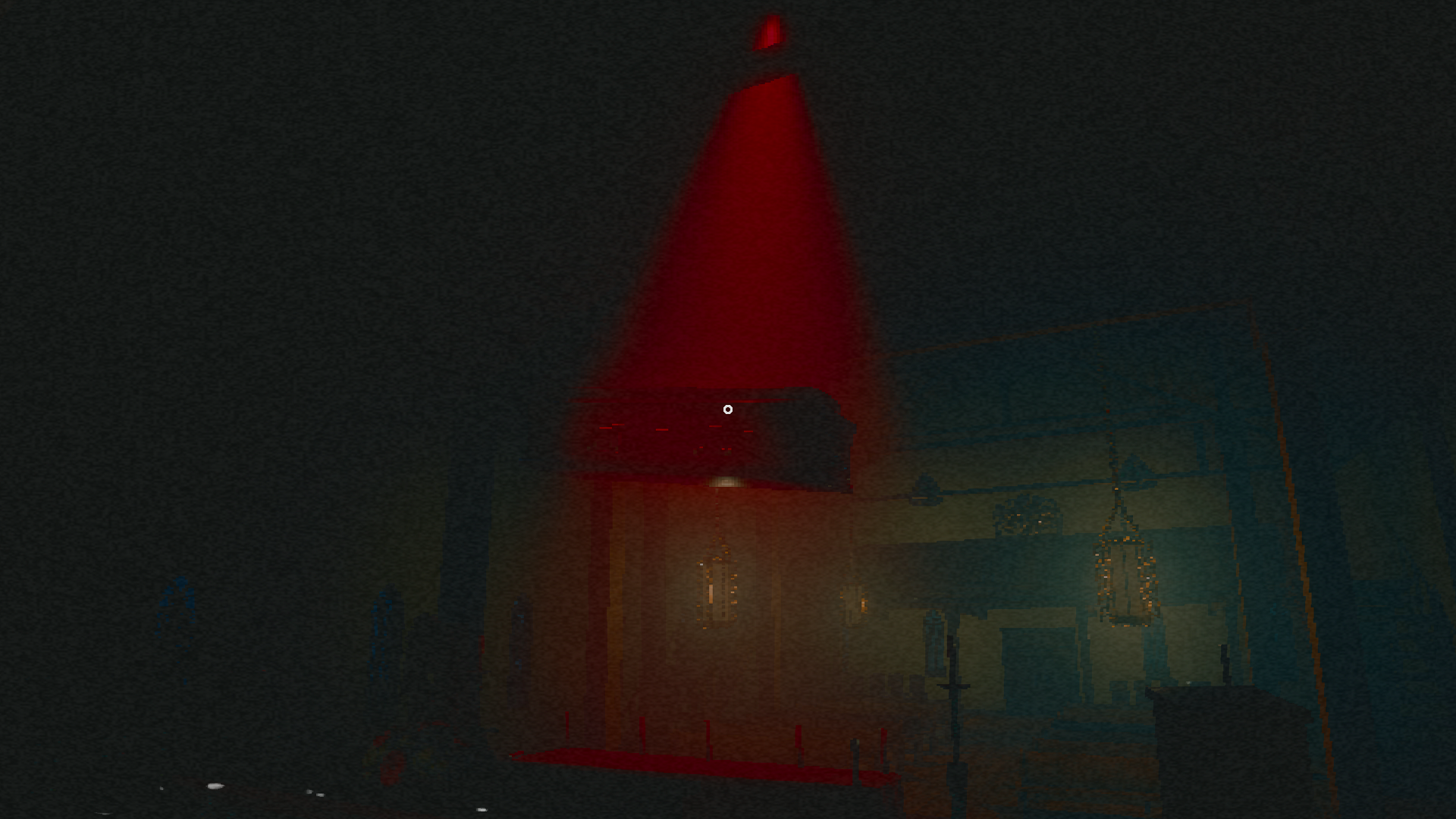On the surface, The Fridge is Red presents itself as a compelling prospect for horror fans and anyone that looks fondly upon those genre games from the 32-bit era. An anthology of six interconnected stories exploring various states of loss and grief, 5Word’s retro-styled horror attempts to haunt and horrify through more complex means than the jump scare (though there are a few skulking about in the dark ready to frighten you). Its tales of terror instead mostly rely on a psychological dread that winnows through the mind, looking for cozy, bloody places to burrow.
It’s a shame, then, that The Fridge is Red is full of spoiled meat left fetid beyond its expiration date. Any potentially alluring aspects that have drawn you into its fitful, fever-dream narrative are often undone by stale, tedious gameplay or outright bellicose design that frustrates more than enthralls. None of that is helped by its slow, meandering pace that can grind progress to a halt in two of its six chapters.
The Fridge is Red follows the story of a man wrecked by misery and his attempts to find peace beyond the tragedies that have befallen him. Each of the six episodes explores his journey through these different stages of suffering and acceptance, all while acting as nightmarish allusions to the actual events that ushered him into madness in the first place.
At the center of it all is the eponymous fridge, which is anachronistcally shoehorned into every story. Looming over the start screen, you interact with the fridge to begin a chapter, each represented by some foul leftover food item. There are two stories/items available at the start, and more rotting concoctions appear on the racks as you complete stories. It’s a unique, memorable take on chapter select and a nightmarish visual that sticks with you well after the credits roll.
The first story, Fidgeted Sherry, is the game’s simplest if most unnerving tale, sharing similarities with horror shorts like Stephen King’s The Mangler. A callback to when The Fridge is Red was an Itch.io product crudely titled Do Not Take Your Eyes Away From the Fridge, Fidgeted Sherry does a lot with a little. Here, the red appliance moves ever forward whenever you look away — which you must do to solve the chapter’s puzzle — keeping the tension high and fear inescapable.
Subsequent yarns grow more complex in design and gameplay but progressively less effective at cultivating fear and dread. Chapter 2, For Daddy to Work, has one of the game’s only proper (and successful) jump scares and quite literally descends into an acrid hell-swamp of bits and gore. But overlook an easily-missable item near the end or fail to comprehend the meaning behind the final obtuse puzzle, and you’ll fully understand the meaning of eternal damnation.
Seaside follows and is a genuinely sorrowful account made ineffectual by the looping, maddening hospital halls in which it takes place. The chapter is made most memorable by its needlessly infuriating design and exasperating mechanics instead of what it has to say about the aftermath of death. While it could be argued Seaside’s point is to push you utterly into the pits of madness, forcing you to identify with the protagonist at each agonizing step, it so egregiously misses the mark that you wouldn’t be at fault for closing the game and never looking back.
Episode 4, Charlene Mufi, contains what are perhaps the game’s creepiest elements, involving possession at a funeral service and implied cannibalism. Though it starts strong, it ultimately falters under the weight of its second half, in which you’re stalked by a murderous priest through the catacombs beneath a graveyard. It’s a game of cat and mouse played out in dozens of other horror games with its only truly compelling quality being its surrealist setup.
Goldi Vern, Episode 5, is an interesting but woefully executed chapter made worse by poor driving mechanics, another looping, maze-like level structure, and a reliance on tired horror tropes that only serve the story because of their inalienable connection to the genre. The chapter’s unforgiving checkpoint system, the car’s proclivity to flip and get stuck upside down, and the unclear signposting near the climax make playing through to the anthology’s underwhelming, if tragic, ending a chore at best.
Finally, there’s Chili Handled, which brings the narrative full circle, showing the true meaning of the red refrigerator that’s appeared in all previous chapters.
Despite its failings elsewhere, The Fridge is Red succeeds in building a thick, foreboding atmosphere across its interconnected chapters. A sickly-sweet aura engulfs many of the environments, some even implementing fog (or gas where it makes environmental sense) in what can only be interpreted as a (good and welcomed) callback to games like Silent Hill.
The ways in which 5Word implements the low-fi, Playstation-1 era graphics not only harken back to some of the best games of that time but also increase the fear factor of every scene; your eyes will play tricks on you simply because things can be hard to see. Is that a “thing” lumbering in the shadows or just the result of how light plays off the darkness in these low-poly environments?
Rounding out the retro visuals are the VHS scanlines that scramble across the screen from the initial starting menu through each of the chapters, lending the whole experience the chilling analog feeling so recently popular in other similar games and films.
Special mention should be made of the game’s use of silence to underpin the atmosphere. Some chapters completely eschew the melancholic synthwave-adjacent soundtrack — which itself builds an indelible, complementary ambiance when it appears — to leave you alone with nothing but your footsteps echoing down a dark hallway or the creaking of a door that shouldn’t be opening.
The Fridge is Red Review — The Bottom Line
Pros
- Firm narrative payoff to a sad story.
- Nice references to horror books, films, and games.
- Creepy retro graphics and visual effects.
- Expert use of silence to create dread and scares through sound.
Cons
- Inconsistent signposting.
- Story too reliant on horror tropes.
- Tediously repetitive level design.
- Poorly mixed sound effects.
- Unnecessarily garbled voice overs that require subtitles.
- Lack of several basic game options, namely inversion controls.
With repetitive level design that relies on the same basic principle chapter after chapter, unclear and inconsistent signposting that leads to disorientation at best and frustration at worst, and a lack of compelling gameplay, it can be hard to see what The Fridge is Red could have been.
But if you can look past its many faults, that image starts to emerge from the darkness. There are some memorable moments here, and the story, while predictable and rife with weary tropes, explores a relatable topic that would touch all but the hardest of hearts in its final moments.
5Word Studios is on to something with The Fridge is Red, and while I’m doing what I hate to do by giving a game a low score, I’m still interested in what this studio could do with its next horror game, whatever that may be.
[Note: tinyBuild provided the copy of The Fridge is Red used for this review.]













Published: Nov 4, 2022 5:43 PM UTC